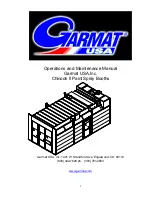
NIRE-170-1-6
33
VII. OPERATION CONTROL
1. Standard Operating Conditions
Table VII-1 shows standard
operating conditions for “NHP210 Series".
To ensure stable operation, operating parameters such as MLSS, sludge viscosity, DO
(dissolved oxygen concentration) and pH should be kept in the range of recommended
standard operation conditions listed in Table VII-1 below. All waste water should pass
through a 3mm (or less) screening device before introduction into the membrane tank. Large
solids may damage the membrane surfaces.
If anti-foaming agents are to be added to the membrane tank, use only alcohol based
anti-foaming products. Do not use silicone-based anti-foaming agent which may
cause choking of membrane pores.
* Recommended:
Kurita Water Industries “Kuriless 653”
Schill & Seilacher
“Structol SB2032”
The operating conditions may deviate from these standard conditions, depending on
condition of the sludge, raw water quality and/or other given operating conditions.
Table VII-1 Standard Operating C
onditions for “NHP210 Series”
Parameter
Unit
Operating condition
MLSS
mg/L
7,000 - 18,000
Sludge viscosity*
mPa
s
Not higher than 100 **
Not higher than 250 ***
DO
mg/L
1.0 or more
pH
-
6 - 8
Liquid temperature
degree C
15 - 40
Scouring air
flow rate
NHP210-300S
NL/min/Module
(Cubic feet/min/
Module)
1,300 (46)
NHP210-600D
1,500 (53)
* Measured by single cylinder rotary viscometer.
** B type viscometer, e.g. VT-03F by Rion Co., Ltd at 62.5 rpm rotation.
*** C type viscometer, e.g. TVC-10 by Toki Sangyo Co., Ltd at 20 rpm rotation.
Do not use the filtrate water for drinking.
Analyze the quality of the filtrate water to ensure that the water
quality meets the intended purpose before actual use.
Do not use chemicals, toxic agents, oils or other substances that
can adversely affect the condition of activated sludge.
CAUTION
!
WARNING
!
WARNING
!
















































